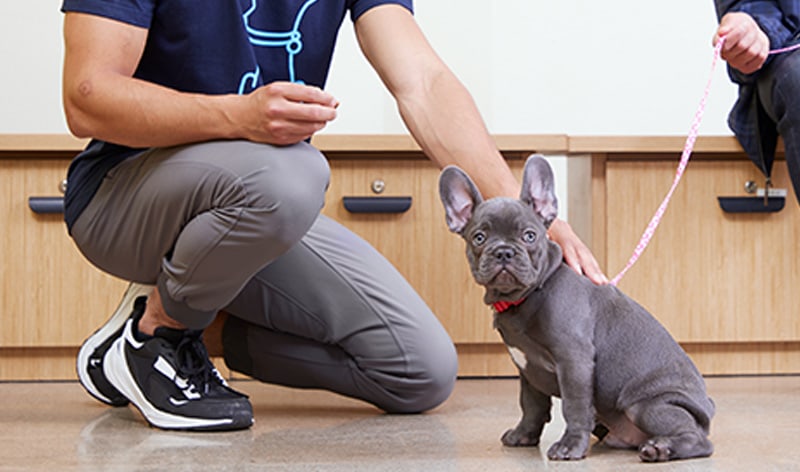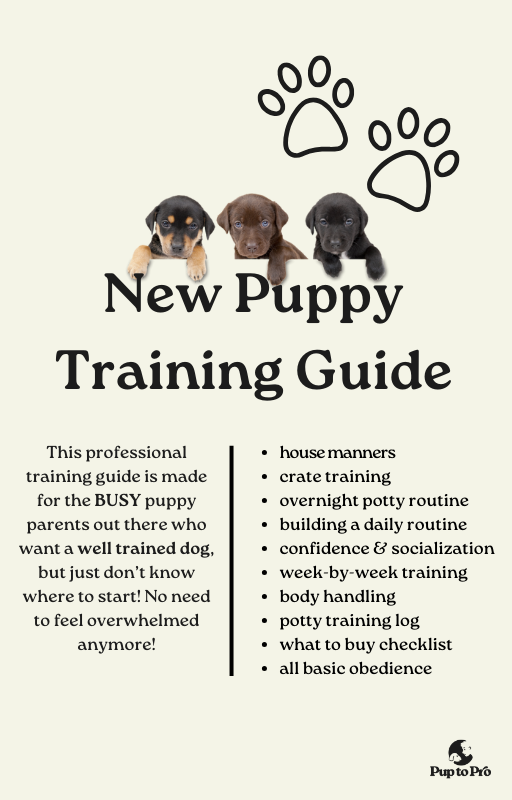Leading Puppy Educating Techniques to Make Certain a Mannerly Pet Dog
Effective pup training is essential for growing a well-behaved friend, and different strategies can substantially influence a dog's advancement. As we discover these methods even more, it comes to be clear that the success of pup training hinges on a combination of approaches that can transform your pet dog's behavior in exceptional ways.
Favorable Support Techniques
Using favorable reinforcement techniques is necessary for efficient pup training, as it encourages preferred actions via incentives as opposed to penalty. This method takes advantage of the all-natural knowing processes of pets, reinforcing etiquette by offering immediate and concrete rewards, such as treats, praise, or play. By connecting favorable outcomes with particular actions, young puppies are most likely to duplicate those behaviors in the future.
Effective positive reinforcement involves timing and uniformity. Rewards ought to be provided right away after the preferred behavior happens to create a clear connection in the puppy's mind. Additionally, varying the sorts of incentives can maintain a pup's passion and inspiration throughout the training process. Some pups might respond far better to spoken praise while others may prefer a favored plaything or treat.

Consistency in Training Commands
Preserving uniformity in training commands is vital for strengthening the lessons found out via positive reinforcement strategies. Dogs thrive on regular and predictability, so using the exact same spoken commands and hand signals for details actions is necessary. This uniformity aids puppies understand what is expected of them, minimizing complication and stress for both the family pet and the trainer.

Timing also plays a substantial function in consistency. Commands need to be provided promptly throughout training sessions and complied with right away by positive support, such as treats or appreciation. This instant response assists solidify the organization between the command and the wanted habits.
Incorporating uniformity into training sessions will certainly create a secure knowing setting, promoting quicker proficiency of commands. Ultimately, a well-structured strategy fosters a solid bond between the young puppy and its owner, causing a more loyal and well-behaved pet.
Socializing With Various Other Animals
Socializing with other family pets is essential for a pup's development, as it assists them find out suitable actions and interaction skills in varied social contexts. Very early interactions with different pets can significantly influence a young puppy's personality and adaptability in numerous circumstances. When puppies are exposed to a selection of animals, they come to be extra confident and less frightened, which can prevent possible behavioral concerns later on in life.

Instruct your pup to acknowledge signals from various other pets, such as indications of you can check here playfulness or discomfort, fostering common regard and understanding. Regular socializing not only boosts your young puppy's social abilities but likewise adds to their general well-being, creating a more harmonious living setting.
Crate Training Perks
Recognizing the many benefits of dog crate training can significantly improve both the young puppy's and owner's experience. Crate training gives a safe and secure setting for young puppies, ensuring they feel protected when left alone. This complacency can dramatically reduce stress and anxiety and stress degrees for both the proprietor and the pet dog.
Additionally, cages work as a beneficial house-breaking tool. Young puppies normally stay clear of dirtying their resting area, thereby encouraging them to hold their bladder up until they are let outdoors. This impulse can quicken the housebreaking procedure, fostering excellent behaviors early.
When without supervision,Crate training likewise assists in taking care of a pup's actions - puppy training. By providing a designated space, proprietors can prevent destructive actions, such as eating on furniture or getting involved in damaging substances. Additionally, pet crates can be beneficial throughout traveling, providing a familiar space that can aid relax a pup in brand-new atmospheres.
Lastly, establishing a crate regular motivates independence, permitting pups to discover how to be alone without anxiety. Generally, crate training is a reliable approach for advertising discipline, peace, and security, leading to a well-adjusted, well-behaved pet dog.
Leash Training Basics
Leash training is a fundamental facet of responsible family browse around these guys pet ownership that ensures a safe and pleasurable walking experience for both the pup and its owner. Correct leash training begins early, preferably throughout the puppy's socializing duration. This training aids establish great behaviors and promotes positive actions when out in public.
To start, pick a comfy collar or harness that fits your puppy well. Connect a strong chain, ensuring it is not as well long, as this can cause drawing and irregular habits. Beginning in a quiet atmosphere to lessen distractions and gradually present your pup to brand-new environments.
Use positive support strategies, such as deals with and home appreciation, to urge your pup to stroll beside you. If your young puppy pulls, stop strolling and wait for them to return to your side before continuing.
Furthermore, incorporate short training sessions with enjoyable disturbances to construct your pup's focus. With dedication and persistence, chain training will certainly lead to a hospitable companion, making strolls satisfying for both the proprietor and the puppy.
Conclusion
In conclusion, employing reliable puppy training strategies is essential for creating a well-behaved animal. On the whole, these methods collectively advertise a harmonious connection in between pups and their owners.
As we check out these approaches further, it becomes clear that the success of pup training hinges on a mix of approaches that can transform your animal's habits in impressive ways.
Using positive reinforcement techniques is necessary for reliable puppy training, as it encourages preferred habits with benefits instead than punishment.Crate training likewise helps in handling a young puppy's behavior when unsupervised.Leash training is an essential element of accountable pet ownership that ensures a pleasurable and safe strolling experience for both the young puppy and its owner.In conclusion, utilizing reliable young puppy training methods is vital for creating a mannerly pet.
Comments on “Common Mistakes to Avoid in Puppy Training and How to Correct Them”